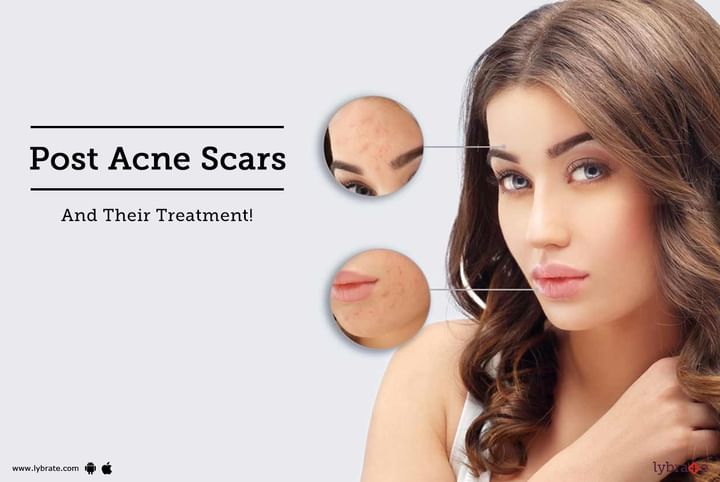Post Acne Scars And Their Treatment!
The skin is known as the largest organ in the human body. It covers us from top to toe and has three layers:
- Epidermis: The outermost layer
- Dermis: Lies just beneath the Epidermis
- Hypodermis: It holds the fat and connective tissue
Our skin requires constant care and protection because it is exposed to the ravages of pollution, dust and harmful UV rays. Let us consider the following reasons for taking care of the skin.
- Free Radicals: The particles or molecules that escape from dust, pollution and other such factors in everyday urban living, settle on the skin and clog the pores. It is important to clean the skin every single day and exfoliate at least once a week with a trip to the salon or with a facial scrub at home, so that these can be removed.
- Dead Cells: The skin throws up dead cells on a daily basis, which may not be obvious to the naked eye. These need to be cleared daily as they can also clog the pores and give rise to acne, skin infection and other skin conditions, that can take a turn for the worse with ailments like Melanoma and skin cancer.
- Elasticity: One must keep the skin clean and use anti aging products in a timely manner along with a good moisturiser and sunscreen, so that the supple quality and glow is kept intact with a regular cleanse of the collagen, which can be prevented from slipping away due to neglect. This collagen keeps the elasticity of the skin which makes the skin look firm and young.
- Prevention: One must clean the skin and use skin care products that prevent premature aging and accumulation of free radicals. Prevention is better than cure and this stands true in the case of skin care as well.
- UV Rays: The powerful UV rays can hit your skin persistently and cause long term damage and sun spots. In order to lessen the damaging effect, it is important to use protective skin care products that will help in keeping freckles, age spots, brown spots, skin peeling and excessive sunburn and tanning at bay.
- Skin Problems and Allergies: Bug bites, injuries and other allergies must be taken care of instantly with a visit to the doctor or medicated creams and medication. This will ensure that the delicate texture of the skin does not get marred by possible infection.
Post Acne Scars and their treatment
When you have a pimple, it is very tempting to burst it. While this may provide temporary relief, it can often leave scars behind. In many cases, these scars may be permanent and can mat your beauty. Thankfully, there are ways to treat acne scars. Treatment for acne scars depends largely on the type of scars.
Treatment for Indented Scars
Indented scars can be seen in the form of shallow pits on the skin. They are caused by the release of insufficient collagen during the healing phase. Microdermabrasion is the most popular form of treatment for such acne scars. This is a noninvasive technique that exfoliates the outer layer of skin and helps renew skin. In the case of shallow indented scars, this treatment may completely eliminate the scar while in the case of deeper scars; it can make them less visible. Deep indented scars may also be treated with lasers to reduce the size of the scar mad erase persistent marks. If neither of these techniques work, surgery may be advised. This involves removing the scarred area and inserting skin grafts in its place.
Treatment for Raised Scars
An excessive production of collagen during the healing phase can raise the scar. These may also be termed as keloid and hypertrophic scars. Injecting corticosteroids or silicon into the skin can help flatten the scar and level your skin. Cryotherapy may also be used to treat such scars. This therapy involves exposing the skin to extremely low temperatures so as to freeze the skin cells and make them peel off. In some instances, surgery may also be required.
Treatment for Discoloured Scars
Acne can often leave behind discolored patches of skin. In cases of excessive melanin production, the skin may appear darker than normal. On the other hand, if the melanin production is compromised, hypopigmentation may occur which makes the area look lighter than the surrounding skin. Pigmentation scars are easier to treat as compared to raised or indented scars. Topical ointments may be prescribed as the first form of treatment for these scars. Exfoliation can also be very helpful. Addition treatments could include microdermabrasion, laser treatment, and chemical peels.
When it comes to acne scars, prevention is the best remedy. Most scars are created by picking zits and trying to drain them yourself. This should be avoided. If a zit is painful, consult a dermatologist who can drain it for you. It is important to look after your skin with a proper routine of cleansing, toning and moisturising. In case you have a concern or query you can always consult an expert & get answers to your questions!



+1.svg)
